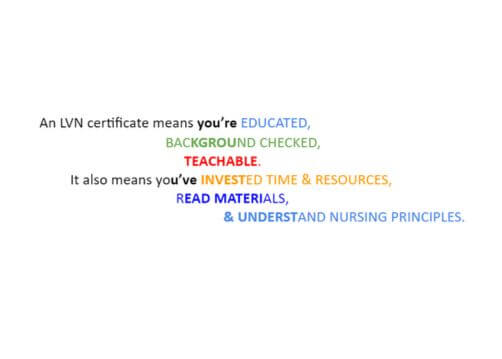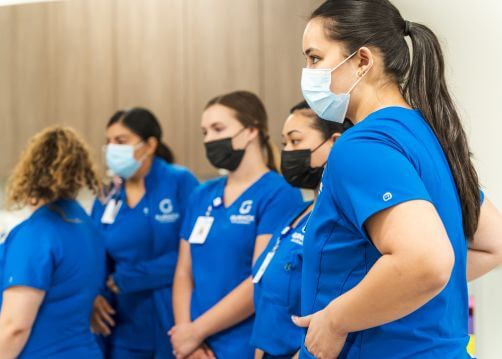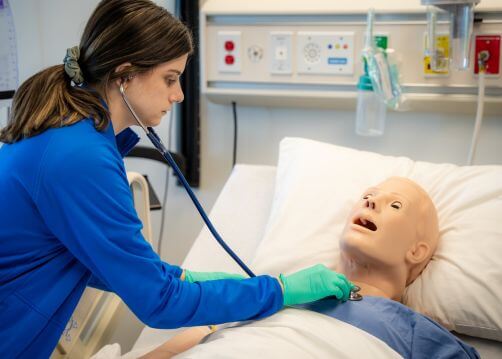Five Trends Transforming Continuing Education
Date: January 10, 2023
In a recent blog article, “Five Trends Transforming the Continuing Education Landscape,” Kate Ressler, from National Healthcare Association (NHA), lists some emergent trends within continuing education (CE). These are listed especially as they relate to allied-healthcare education.
1. Online Solutions Likely to Expand
First, Ressler cites that professionals have traditionally attended in-person meetings, courses, and events to earn CE credits. Believing this mode of education is likely to continue, she also states that as healthcare progresses, so will the future of CEs for healthcare professionals.
Listing cost as the impetus for shifts, she follows a premise cited by Dr. Robert L. Joyner, director of the School of Health Sciences at Salisbury University in Maryland. Dr. Joyner says, “The expense of attending meetings can be extensive and unrealistic for many types of healthcare providers. Increasingly, practitioners are turning to online solutions for their continuing education needs, and I believe that the market will continue to expand as we use technology to connect all parts of our lives—both professionally and personally.”
2. Know the Importance of Engaged Learning
Second, on Ressler’s list of emergent and expanding CE trends is a focus on interactive instruction. She cites Marilyn Wideman, DNP, academic dean and vice president of the School of Nursing at Purdue University Global, explaining engaged learning models. According to Wideman, the “Use of experiential and engaged learning can build skills and confidence as well as allow the learner to apply new knowledge, to learn from their peers, and build greater insights into their knowledge level and skill sets.”
For the above, Ressler provides simulation as an example. She says it is “interactive, builds skills and knowledge, and provides an opportunity for learners to apply what they’ve learned.”
3. There’s a Move Toward Interprofessional Education
Third on Ressler’s list of emergent and expanding CE trends is the shift toward more interactive learning models. Stating CEs for healthcare professionals have long been discipline-specific, she says today’s healthcare professionals have increasing demands that require a broader knowledge base beyond their traditional specialties.
A number of healthcare professionals are seeking continuing interprofessional education
“We’ve seen this trend in stacking allied health credentials, and now, an increasing number of healthcare professionals are seeking continuing interprofessional education, allowing them to collaborate with providers from outside their profession or across specialties,” she says. “Though interprofessional CEs will not replace discipline-specific models, many anticipate that increased usage will ultimately improve patient care.”
4. Understand the Use of Personalization
Fourth on Ressler’s list of emergent and expanding CE trends is the use of personalization in curriculum and training. She notes individualized experiences are everywhere. In support, she says, “The federal report, Continuing Education, Professional Development and Lifelong Learning for the 21st Century Health Care Workforce recommends not only interprofessional learning activities and flexible learning modalities but also learner-driven curricula, providing more personalized CE experiences.”
She then cites Widemann, who says, “There is still work to be done in the CE world to accomplish impactful personalized CE learning. But, on-demand online learning options may help propel CE to meet the individual learner’s needs. With on-demand [education], the learner could be choosing to learn what they want to know versus just what they need to know.”
5. Use Tactics to Fill Knowledge Gaps
Fifth, on Ressler’s list of emergent and expanding CE trends, she states CEs of the future will likely fill knowledge gaps more accurately. She says that because CEs are often provided instead of other training methods, some, like Dr. Joyner, hold that CEs alone shouldn’t be used for skill development. However, combined with a comprehensive skill-development program that includes education and time for practice, discussion, and remediation, they can succeed.
Ressler cites the electronic mining of healthcare data as an identifier of said gaps. In support, Ressler notes Wideman, who states: “Use of data to inform population-focused CE provides opportunities for understanding new or changing health issues in the clinicians’ geographic areas along with an understanding of best practices to address emerging or current health issues.”
Summary
Ressler concludes, “In the years and decades to come, the preferred modalities for CE will adapt to meet the needs of a changing healthcare workforce. Change is always certain, and ultimately the goal and hope moving forward are that healthcare professionals receive the best training and CE possible, so patients receive the best care possible.”
If you are wanting to go back to school, check out our list of educational offerings here.~
Citation:
1 Ressler, Kate. 2021. “NHA News and Media Information.” Allied Health Association (NHA). Sept. 2021. (Accessed Sept. 2021.)








